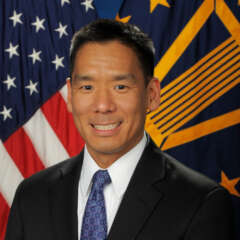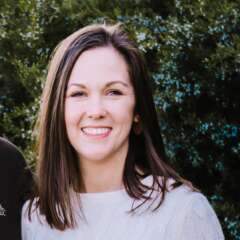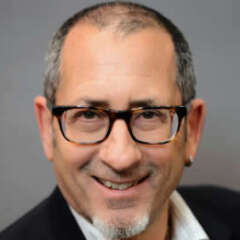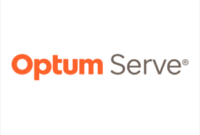Speakers
5 speakers
Date & Time
On Demand
Webinar
Date: September 20, 2022
Time: 2:00 pm ET
Duration: 1 hour
Cost: No Fee
Few phenomena are more troubling for federal programs than the loss of dollars through fraud. Each year this form of waste results in billions of dollars of improper payments. Health care delivery programs are among the biggest targets.
Agencies have many tools to ensure the percentages are low and to prevent fraud and program abuse, rather than try and recover lost funds.
Fraud and abuse prevention are central activities at the Center for Medicare and Medicaid Services, part of the Health and Human Services Department. Its programs are more extensive than people often recognize. In addition the basic Medicare and Medicaid programs themselves, CMS also encompasses Medicare Part D, the Children’s Health Insurance Program, and the marketplace for the Affordable Care Act.
In fact, CMS Medicare alone, CMS handles 1.2 billion claims submitted per year. That’s according to Dara Corrigan, the CMS deputy administrator and director of its Center for Program Integrity. During a panel discussion on ways to stay ahead of fraud, waste and abuse, Corrigan said fraud prevention requires continuous attention and agility.
“Those who want to commit fraud are always trying to stay ahead of the system,” Corrigan said. “So if there is a new benefit, or there is a new challenge, or something unprecedented, like the pandemic, it opens up new doors for people to commit fraud.”
At the scale of CMS, keeping ahead of fraud requires timely and accurate program data, Corrigan said, as well as carefully calibrated data analytics applications.
“What we’re always trying to do with our data analytics,” she added, “is to have the most correct and accurate data in the same place at the same time. So that we can be using algorithms and analytics to try and see where the fraud is going or where it might be starting.” Pay-and-chase, Corrigan said, is never efficient.
Miranda Bennett, the assistant inspector general for investigations at HHS, underscored the importance of fraud prevention, noting that HHS spent $2.4 trillion through CMS in fiscal 2021,
“Fraud schemes shift constantly, and we work very diligently to stay ahead of those fraudsters,” Bennett said. Therefore it’s critical, she said, to use data and technology to detect fraud schemes as early as possible. That in turn enables the Office of Inspector General to make timely recommendations.
The Veterans Affairs Department, with nine million direct beneficiaries, more than 150 medical centers, and a $240 billion annual budget, shares many of the fraud and abuse challenges with CMS.
“It’s a task that we have to constantly be thinking about. What is coming down the pipeline,” said David Johnson, VA’s assistant IG for investigations, “as opposed to what’s already happened.” VA uses data analytics, social media and new tools “to detect fraud before it even occurs.”
Besides medical and disability claims frauds, Johnson said, the VA must also watch for employee embezzlement and drug diversion at its medical facilities, some of which resemble mini-cities.
Another issue is procurement, Johnson said.
“VA is one of the largest purchasers of goods and services, to supply our medical service, our medical system,” Johnson said. In acquiring pandemic-related “we ran into a number of vendors, who either claimed to have PPE that they did not have, or they were trying to sell counterfeit or substandard goods.”
Start with data
The private sector healthcare industry faces fraud and abuse problems similar those of federal organizations. Amanda Warfield, the vice president of program integrity at Optum Serve, said industry’s approach to combatting fraud also starts with data.
“There’s data in different places,” Warfield said. “Having the data all in one place gives you that visibility, to do trend analysis and to use technologies like artificial intelligence and machine learning to get predictive in nature, to be able to see where fraud schemes are moving.”
Often, when data is compared to program rules, anomalies will manifest themselves and call for deeper investigation, panelists agreed. Other times, the organization may receive a tip that will touch off an investigation, suggesting data sets to assemble for a specific purpose.
“One of our best sources are the beneficiaries of the program,” Corrigan said, people who comb their claims in detail or “they go to their physician and something seems off.” Calls then come into the agency’s 800 numbers or to the inspector general.
Another strategy is to view the program as a recipient or beneficiary would – or as a thief would. Almost like black-hat hacking, panelists said, pressure testing your own program can reveal potential vulnerabilities early enough to prevent fraud.
Agencies are finding that as fraud prevention becomes more and more a data-driven activity, it’s wise to make sure data officers and data scientists are part of the team. Bennett said IG auditors regularly work with data scientists “that can evaluate each data set and how best to marry it up with our technologies.”
The VA’s Johnson said his office also partners with what VA refers to as community care providers, private health care organizations that also provide medical services to veterans. Beyond that, he said, “We have actually formed a task force with the Department of Justice, the Veterans Affairs Health Care Fraud Task Force.” It’s been running for three years, and also includes “partnering with the strike forces that CMS and HHS OIG have already established.”
Johnson added, “One of the things that I’ve wanted to emulate over at VA is the robust data analytics programs that the strikes forces use to detect potential fraud and try to use them, particularly in the growing community care programs.”
Such programs show up clear fraud indicators such as millions of dollars of billing in a single day from a single source, or a surgeon billing for two operations simultaneously on opposite coasts.
Also helpful, Warfield said: Unique provider and biller identifiers, and the ability to do entity matching across private and public domains. She described entity matching as “technology designed to pair two different datasets together and, and boil it down to, ‘this is the same entity in this one and that one,’ so that you can do those further downstream types of analytics and reporting.”
She emphasized the importance of a team approach, pairing technologists and data scientists with program people who know the rules and what it takes to support a criminal investigation.
“We have found that having … our IT and data folks, really partnering with the folks who are doing the investigations, is really critical.”
Learning objectives:
- Challenges in Preventing Fraud, Waste and Abuse
- Data Management
- Use Cases
Complimentary Registration
Please register using the form on this page or call (202) 895-5023.
Speakers

David Johnson
Assistant Inspector General for Investigations, Department of Veterans Affairs

Dara Corrigan
Deputy Administrator and Director of the Center for Program Integrity, Centers for Medicare & Medicaid Services

Miranda Bennett
Assistant Inspector General for Investigations, Department of Health and Human Services

Amanda Warfield
Vice President, Program Integrity, Technology Services, Optum Serve

Tom Temin
Host, The Federal Drive, Federal News Network
Please register using the form on this page.
Have questions or need help? Visit our Q&A page for answers to common questions or to reach a member of our team.

